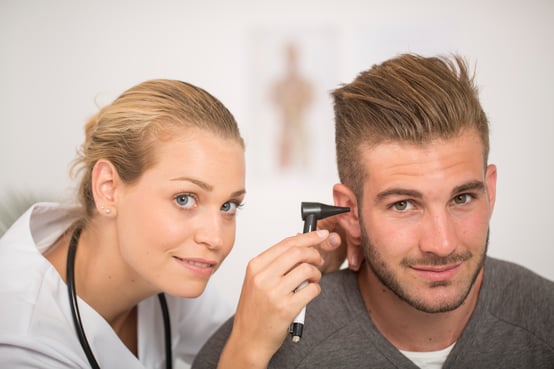What is the purpose of ear wax?
Ear wax, or cerumen, is a natural secretion from glands lining the entrance to our ear canal. It lubricates the skin, traps foreign objects, and provides antibacterial/antifungal properties. The natural migration of skin and wax from the ear helps remove unwanted dust, debris, and dead skin cells.
 Why should wax be removed?
Why should wax be removed?
Some individuals produce more wax than others, leading to a build-up that can temporarily cause hearing loss by obstructing sound transmission. Excess wax can also trap water, creating an environment for bacteria and fungi to thrive, potentially causing an ear infection known as otitis externa. Fully blocked ears can be uncomfortable, and if the wax presses on the eardrum, pressure equalisation can be difficult, resulting in blockage, soreness, dizziness, vertigo, and tinnitus.
How does wax removal work?
There are three primary methods for wax removal:
Irrigation: Water is flushed into the ear canal to dislodge the wax and flow it into a collection bowl. GPs and nurses commonly use this method, which requires minimal specialised equipment and is fairly effective.
Manual extraction: Tools such as hooks, loops, picks, and forceps are used to grasp and pull the wax out of the ear.
Microsuction: Wax is suctioned out of the ear using specialised equipment. The wax may need to be softened, and sometimes a combination of microsuction and manual removal is employed.
What are the potential risks?
Each method carries its own risks:
Irrigation: The temperature and pressure of the water, as well as the direction of the stream, are crucial to avoid complications such as vertigo, eardrum damage, and post-procedure infection.
Manual extraction: This method can be time-consuming and requires the patient to sit still. Discomfort or pain may be experienced, and it is not suitable for very soft wax.
Microsuction: The noise of the equipment can be uncomfortable for clients, and some may experience vertigo post-suctioning. This method is ideal for softened wax and deep wax removal.
How should I prepare for a wax removal appointment?
Using a wax softening agent, or cerumenolytic, prior to removal can be beneficial. This softens the wax, loosens it from the ear canal, and makes removal easier and more complete. Be aware of your ear history, as the risks of complications increase with a history of perforated eardrums, vertigo, ear pain, previous or pending ear surgery, ear canal stenosis (such as exostosis), and hearing loss in one ear. Your audiologist can advise if wax removal is safe and manageable in the clinic or if a medical practitioner should perform the procedure.
How can I prevent or reduce wax build-up?
Avoid using cotton earbuds to clean your ears! If you know that wax builds up, try using cerumenolytics regularly to reduce bulk and make removal easier. Generally, using these for 2-3 days before a GP visit can allow for quick irrigation.
What should I expect after wax removal?
Most people experience no negative effects post-removal, but vertigo, discomfort, and itchy ears can occasionally occur. If any trauma has occurred, there may be minor bleeding, and the ear canal can be sensitive. Your audiologist will advise if using a hearing aid or other object in the ear should be avoided and for how long.
Overall, wax removal can lead to improved hearing, reduced feelings of blockage, decreased tinnitus, and better-performing hearing aids.
In summary, proper ear wax management is essential for maintaining optimal hearing health, especially for individuals over 45. By understanding the importance of wax removal and the various methods available, you can make informed decisions about your ear care.
If you're experiencing issues with ear wax build-up or have concerns about your hearing, don't hesitate to reach out to our team. They can provide personalised advice, assess your needs, and recommend the most suitable wax removal method for you.
Take action today and schedule an appointment with one of our audiologists to discuss your ear wax removal options and ensure your ears remain healthy and clear.
by Louise Colclough - Audiologist - Chatswood

